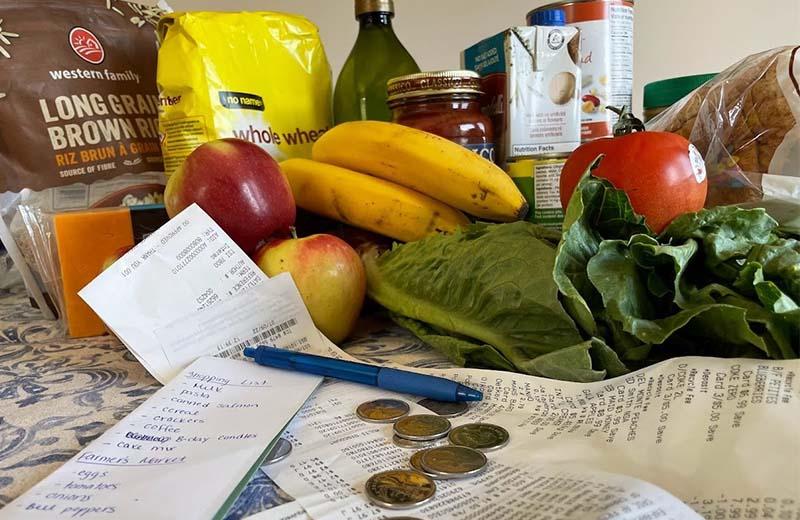Household food insecurity (HFI) exists when factors outside a family’s or an individual’s control limit their access to enough foods that promote their wellbeing. In 2012, the Northern Health region reported the highest overall rate of household food insecurity (16.4 per cent, or 1 in 6 households) when compared to the rest of British Columbia (11.8 per cent).
Ten years later, with higher-than-ever inflation and the rising cost of food, we face new challenges. You might feel as though high food prices are to blame for high food insecurity rates, but that would be a common misconception. As Laurel Burton, a healthy settings advisor with Northern Health, put it in 2018, "the true cost of eating involves more than just food prices.”
Food (in)security is a complex issue that affects many different families; there is no one “face” of food insecurity, and there is not just one solution to overcome it. The myths and facts below may help you learn more about what household food insecurity is – and isn't!
Myth: Only unemployed people need to worry about food insecurity
In Canada, 65% of households experiencing food insecurity have at least one person in the workforce. Low wages, inconsistent hours, and other employment challenges can make it impossible for many working people to make ends meet. With food costs on the rise, and with minimum wage set below the living wage, limited food budgets grow even tighter.
Myth: People who experience food insecurity just need to learn to budget, plan meals and cook
Household food insecurity can't be solved with better budgeting skills. As the costs of food rise, households with low and fixed incomes are affected the most. With low incomes and after paying certain non-negotiable payments, such as rent, utilities and transportation, some families simply don't have the means to buy enough food. Canadians who experience food insecurity have been shown to have the same, if not better, levels of skill in cooking, budgeting and food shopping, when compared to food-secure households.
Myth: If you have food in your kitchen, you cannot be food insecure
Having food to eat but worrying about running out of food before you have money to buy more is what we call “marginal food insecurity." It too can affect mental and physical health and it might mean that a household is less able to bounce back from unplanned financial setbacks, such as increasing food costs.
A household that is truly food-secure needs more than just the presence of food. It needs to have reliable and ongoing access to food that is affordable, culturally preferable, nutritious, and safe. The types and amounts of food needed to make a household food-secure vary between families.
FACT: Household food insecurity is a complex problem that needs complex solutions
A solution to household food insecurity is more than just filling the shelves at the food bank, increasing wages, or lowering the costs of food. Many actions must take place across all levels of government and within our communities so that all British Columbians can access a healthy diet in ways that are meaningful to them.
Want to learn more about household food insecurity and the actions we can take?
- Understanding Household Food Insecurity (report by PROOF, an interdisciplinary research program on food insecurity at the University of Toronto).
- How to tackle food insecurity in Canada (video by PROOF)
- Northern Health, BC: Household Food Insecurity in 2011-2012 (report by the BC Centre for Disease Control)
- The Affordability of Healthy Eating in BC (infographic on food costing by the BC Centre for Disease Control. Food costing for 2022 is currently under way – stay tuned!)
Related NH Stories:














Comments